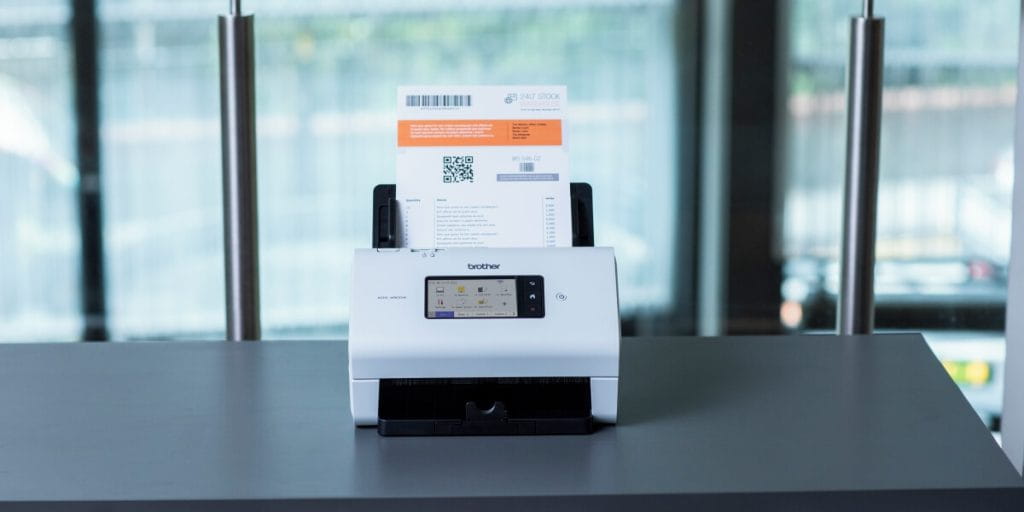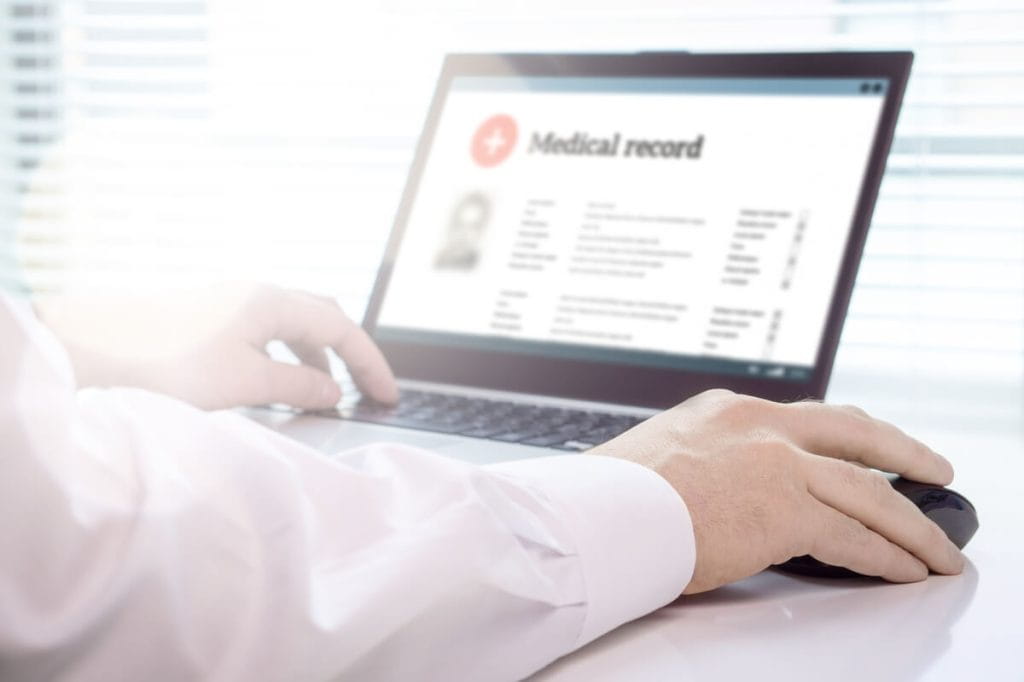What are the benefits of EHR and EMR in healthcare?

Electronic health records (EHR) and electronic medical records (EMR) provide patients and authorised healthcare providers with instant access to all forms of relevant data.
Thanks to the centralisation of patient information — including medical histories and administrative documents — onto cloud-based EHR platforms, physicians, pharmacists and other care providers can make important decisions in a flash. In total, there are more than 200 EHR software options available today.
Having access to confidential and personal medical information is a tremendous responsibility for care providers. To ensure the protection of patient privacy, many seek out hardware solutions that bear the Oracle-Cerner certification. These devices are awarded the designation for upholding standards in compliance with governance and regulations designed to protect data.
Brother is proud to offer a range of Cerner-certified devices to aid healthcare professionals in the digitisation of medical records into EHR and EMR platforms. A Cerner-certified Brother device can reliably print, copy, fax or scan from Cerner’s system – seamlessly and securely.
This article will highlight the benefits of a comprehensive EHR solution, and how Brother devices can help inform cloud-based systems by providing digital access to the mission-critical ‘five rights’ — the right patient, right drug, right dose, right route and right time.
EHR and EMR requirements
Despite the difference in acronyms, EHR and EMR platforms contain the same information. Each provides a comprehensive medical snapshot of a patient. Here we will outline the subtle difference between the two.
What is contained in an EHR?
EHRs are commonly used for larger facilities such as hospitals, or for patients whose care regimen covers a variety of providers. For example, an individual who has a health team consisting of a family physician, as well as a specialist at another practice, will often have their information shared via an EHR.
An EHR may contain billing and insurance information, as well as a list of medications, allergies, immunisations and lab reports.
What goes into an EMR?
Conversely, an EMR system is managed electronically by a single provider. It often contains the same information as an EHR, but is accessed only by a sole practitioner or clinic. Typically, EMRs also contain any relevant billing and insurance information.

Why EHRs are critical for efficient patient care
As outlined, EHRs are important when care is shared between multiple providers. EHR systems provide a set of digital tools that can be updated between medical personnel to inform patient care. Accessing the entirety of a patient’s medical history offers better observation and insight into individuals with robust EHR profiles.
Let’s take a look at some of the benefits of an efficient EHR system for your healthcare facility:
- EHRs offer providers a comprehensive view of their patient’s medical journey, providing them with vital information to make informed decisions. This enables cross-facility communication, as well as the opportunity for a new provider to review a medical history in relation to any current symptoms or ailments. For example, a physician may assess a patient’s previous diagnoses to determine if they are at risk of developing a disease like Type-2 diabetes
- An EHR system also reduces the time providers spend sourcing relevant information. In the old days, a specialist would have to wait for a patient’s charts to be faxed over from their general practitioner. This process could take days or weeks, and impact the quality of care the patient received in lieu of extended wait times
- EHRs can help prevent mistakes. The chances of patients having to go through multiple tests, repeat diagnostic information or answer the same medical questions are significantly reduced when the right medical data is available to all providers tasked with patient care
Brother devices can connect to Oracle Cerner applications to ensure compliance and security for patient record access, scanning and printing.
How Cerner-certified Brother devices aid EHR systems
Brother understands the importance of security as it pertains to medical records in Australia. The unauthorised use or disclosure of healthcare identifiers is an offence under the Healthcare Identifiers Act, and subject to a maximum penalty of imprisonment for two years or a fine of $26,640.
To aid providers in efforts to remain in compliance with EHR regulations, Brother multi-function devices like the MFC-L9570CDW are Cerner-certified and can integrate with EHR software like Sona to securely print schedules, pulse surveys and post-shift feedback.
Here’s a look at how Brother Cerner-certified devices can improve the quality of your EHR-dependent operations:
- Handle high volume workflows: Devices like the Brother Colour Laser Multi-Function Printer MFC-L8900CDW help large hospitals or clinics that need to keep pace with high-volume printing needs. Devices like the MFC-L8900CDW have optional trays that can be added to support additional print tasks as a business grows. Brother MFCs are designed with the needs of healthcare facilities in mind, and offer reliability and continued dependence in high-stakes environments
- Print medical information faster: When time is of the essence, the Mono Laser Multi-Function Printer MFC-L6900DW is a useful tool for providing black and white prints. Perfect for environments like emergency rooms, the MFC-L6900DW provides quality printouts of patient and medical information quickly
- Upload to EHRs more efficiently: Desktop document scanners like the ADS-4900W can handle the high-speed digitisation of medical records and files. By speeding the rate at which paper-based records can be uploaded to a cloud-based EHR, a facility’s administrative staff is free to handle other important tasks
- Protect confidential information: Brother devices come integrated with IPsec to provide robust, industry standard encryption. IPsec helps secure patient-sensitive information against interception and theft when they’re sent for print
- Connect with devices remotely: It’s not just support staff who benefit from Brother’s Cerner-certified solutions. Select Brother multi-function devices with Near Field Communication (NFC) capabilities offer both security and efficient ‘touch to connect’ for direct scanning to connected mobile devices. This ensures EHR data can be accessed by authorised personnel in the field. This integration allows staff, such as nurses, to access the right information while away from a central service hub within a care facility

Brother streamlines your EHR workflows
Healthcare professionals are eager to stay on the cutting edge of medical systems, seeking out state-of-the-art software and technology to improve workflow efficiency. Furthermore, patients themselves have come to expect fast and easy digital access to their EHR files and related services. A recent National Digital Health Survey indicated that 73% of Australian patients expect to be able to book and view appointments online, while a majority (56%) prefer to use online payment services.
To upload patient information in time, healthcare providers can’t afford to remain analog. Patients and other care-based businesses have come to expect that the latest records are available to view on an EHR immediately after the information has been captured.
That’s why Brother is proud to work with healthcare facilities to provide high-quality, cost-effective printing and scanning solutions that address the needs and challenges of the healthcare industry. Our devices help get EHR information into the right hands, and ensure patient information is stored on cloud-based platforms quickly and efficiently.
To learn more about how our Cerner-certified products can reliably print, copy, fax or scan your mission-critical, EHR compatible documents, contact Brother today.

Resource Library
Be the first to receive exclusive offers and the latest news on our products and services directly in your inbox



.jpg?h=2304&iar=0&w=6144&rev=d022697c67844420a65176043eeedd58)
